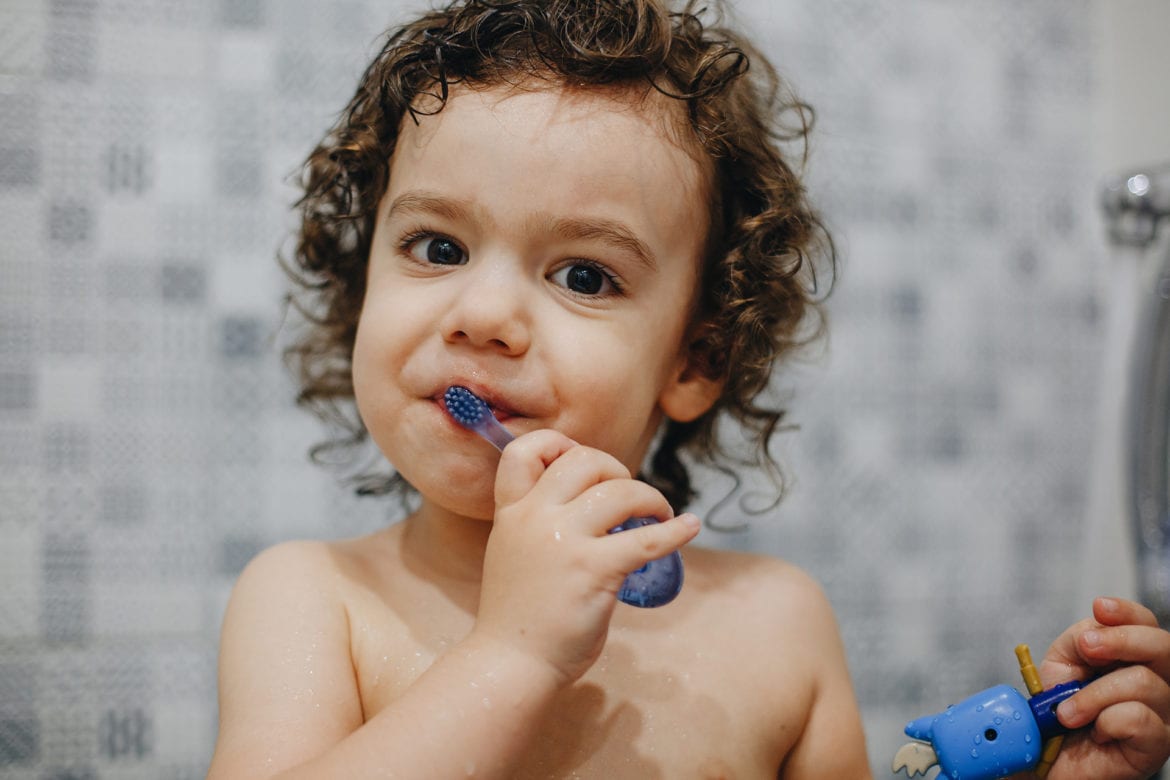Dentists encourage us to start brushing our baby’s teeth even before they have teeth. When their first tooth pokes through parents are even encouraged to go and speak with their pediatric dentist to make sure that there are no major issues with their incoming teeth. In the past, parents weren’t instructed to go to the dentist until all of their teeth had come in a and many dentists didn’t even see children under five years old. There are so many unknowns with dental hygiene when it comes to babies, like, is baby toothpaste harmful?
Humana says, “You might be surprised to learn that, even without teeth, your baby’s mouth needs some regular attention. Breast milk, formula, and water are the only things your baby consumes for the first few months.” They continue, “While all of them are healthy, the breast milk and formula do contain natural sugars. When left in your baby’s mouth, the sugars can create bacteria that produce tooth decay. And while your baby’s teeth may not yet have come in, they are just below the surface and can be affected by any bacteria that grow in the mouth.” Taking care of the gums is not very difficult. Once or twice a day rub a wet cloth of their gums.
Once their teeth start coming in then you can use a baby toothbrush. When you are choosing a toothbrush for your baby it should have soft bristles, small head, and with a large handle. But, what should you do for baby toothpaste? As soon as the baby’s teeth start to erupt it is important to start adding fluoride toothpaste to their toothbrush. Fluoride is essential for proper dental hygiene and health. Many parents skip the toddler toothpaste but that is probably detrimental to health. Fluoride toothpaste, if swallowed in large quantities, can be harmful to toddlers. Therefore parents should only put a very small amount on their toothbrush. American Academy of Pediatric Dentistry and the American Dental Association (ADA), “encourages brushing with a soft toothbrush and fluoridated toothpaste – a smear the size of a grain of rice for kids under 3 and a pea-size amount for those 3 to 6 – as soon as the teeth erupt. Stick to these small amounts of toothpaste to ensure your baby or toddler doesn’t ingest too much of the stuff, since “children may not be able to rinse and spit,” Patel explains. Babies and toddlers also aren’t able to thoroughly brush their own teeth, so you’ll have to do it for them.”
Most parents, when they are shopping for baby/toddler toothpaste, they head straight for the section that is “Flouride free.” Mitali Y. Patel, DDS, a board-certified pediatric dentist and program director of the pediatric dentistry residency at Children’s National Health System in Washington, DC said, “Parents should look for a kids’ fluoridated toothpaste with the ADA Seal of Acceptance,” she continues, ” While it’s true that fluoride can cause adverse effects like mildly discolored permanent teeth (fluorosis) if it’s swallowed…

